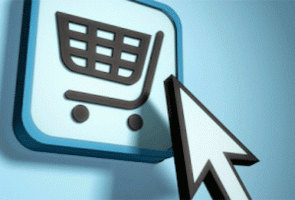Want to sell more products? The key to success is in your product description. Compelling product descriptions drive up engagement. They lower bounce rates, increase time on page, boost conversion rates, and drive more traffic to your site. The bottom line is that an engaging, compelling product description can entice even the most hesitant customer to click “buy,” while long-winded, boring descriptions are a huge turnoff to even the most enthusiastic customers. However, a perfect product description can often seem elusive and unattainable. But with the right approach, it is possible. Check out these tips and tricks to craft compelling product descriptions that will drive your sales through the roof.
Highlight 1 Important Feature
Effective product descriptions are short and to the point. They pack a lot of punch into just a few words. That means it isn’t really feasible to go into great detail about every single feature a product boasts — long-winded copy bogged down by too many specifics isn’t going to maintain a customer’s attention. After all, people aren’t really interested in what a product is, has, or does. They are interested in how a product can make their lives better. They want to know how it solves a problem they have, how it helps them to save time, and how it will save them money. The far better strategy is to highlight one important feature in the text of the description that directly speaks to what the product will do for the consumer, and follow up with a more comprehensive list of bullet points detailing other pertinent features.
Create Content That Is Easy to Scan
Again, long-winded copy is not going to sell your content. Take this into consideration: research shows that consumers read a mere 16 percent of words on any given Web page. In other words, consumers aren’t actually reading content; they are skimming it. That means a compelling product description will typically be easy for a reader to scan. How can a product description be written in such a way that is easy for a consumer to scan? Let’s break it down:
Concise: The wordier the content, the harder it is for readers to derive value from it when scanning. For example, a recent study by the Nielsen Norman Group measured the usability of different styles of text in comparison to a controlled text. Usability was determined taking into a number of different factors, including how quickly readers were able to pull information from the text, how well users remembered information from the text, and users’ overall perceived quality level of the text. In the study, the concise text, which had roughly half of the words of the control text, enjoyed a 58 percent boost in usability.
Objective language: Descriptive adjectives are important when it comes to crafting compelling product descriptions. However, frequently making use of overly boastful or exaggeratory language (i.e. “best in the world,” “most successful in the universe,” “save millions of dollars”) will both distract and annoy consumers, making it difficult for them to quickly pull key points from your description. In the same Nielson Norman Group study, objective language content enjoyed a 27 percent boost in usability when compared to the control text. Researchers speculate that hyperbolic language increases a reader’s cognitive burden, forcing them to wade through unnecessary words and phrases to get to a marketer’s meaning. All in all, it’s much better to just get straight to the point.
Create a scanable format: Structuring product descriptions in a way that facilitates easy scanning is also incredibly advantageous. Be sure to make use of subheadings, create bullet points to draw customers’ attention to specific features, add photography or video, and include ample white space.
Stick to the Facts
Never, never embellish in a product descriptions. If you promise a customer something in a product description, your product absolutely needs to deliver on that product, especially when it comes to online sales. Otherwise, you are going to have a very unhappy customer on your hands once he or she finally receives the product and it doesn’t perform as promised. And remember, unhappy customers aren’t good for business.
Write with the Target Consumer in Mind
Highly engaging copy is never generic. It is always targeted toward a specific kind of customer, often termed a buyer persona. “Basing your work on buyer personas prevents you from sitting on your butt in your comfortable office just making stuff up, which is the cause of most ineffective marketing,” explained marketing strategist David Meerman Scott. So, if you don’t already have them, you need data — average age, occupation, preferences, average household income, location, hobbies, interests, etc. The more you know about your target customer, the better.
Furthermore, writing with the target customer in mind means tailoring the tone of descriptions accordingly. For example, consider Roxy’s product description for its Wild Paradise Brazilian String Bikini Bottoms: “Careful now, this string has some serious zing. And comes styled with a look-at-me-wow print to boot! Our Brazilian String bikini bottom has string sides and offers slim coverage with a low rise.” Roxy is catering to teenage girls, and phrases like “serious zing” and “look-at-me-wow” help to craft a tone that is fun, bold, and attention grabbing. While this might be appropriate for a brand catering to teenage girls seeking to situate itself as bold and fun, this kind of language probably wouldn’t be optimal for a high-end woman’s clothing brand catering to middle aged women that is attempting to exude an elegant sophisticated vibe. All in all, the tone of your content needs to cater to your target customer; otherwise you are going to end up with copy that is boring, unappealing, and, in some cases, offensive.
